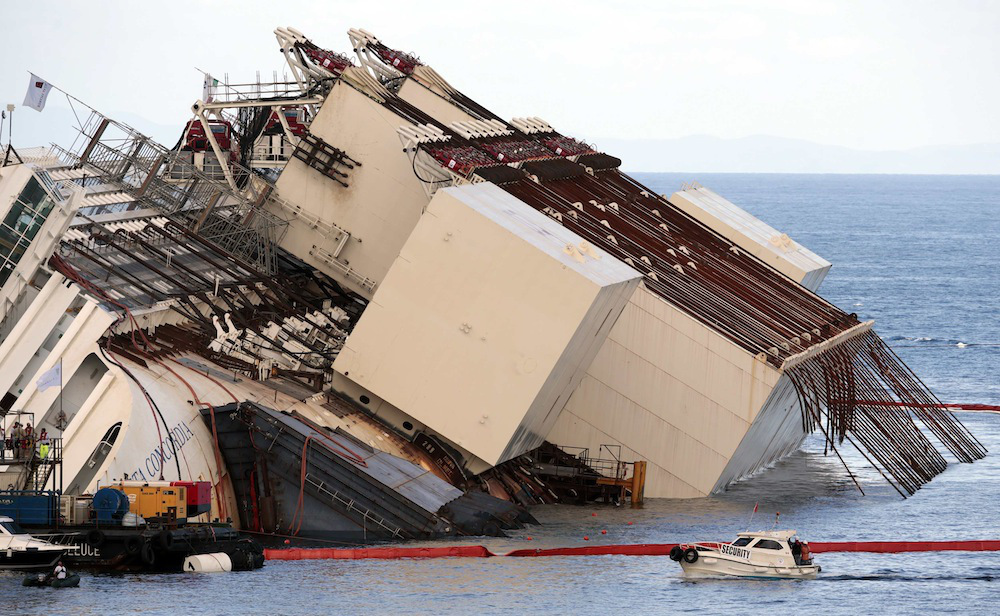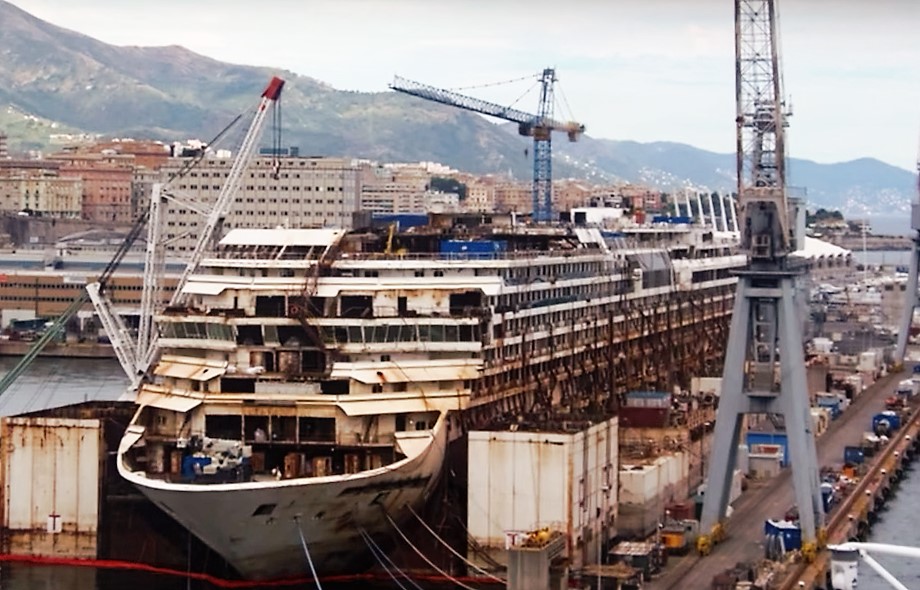Just over one year since the Costa Concordia arrived in Genoa following its successful salvage, the consortium tasked with dismantling the infamous cruise ship have updated that the $87 million project is moving along just as planned.
The last update from the consortium came in May when the Costa Concordia hit the open ocean for one final time, moving 10 miles under tow from the Prà Voltri breakwater to a new dock at the Port of Genoa where the final phases of the dismantling project will take place.
The project, which includes the full scrapping and recycling of the cruise ship, is currently in Phase 2, kicked off with the transfer and now involves the demolition of structures from decks 14 to 2. The project is being carried out by the Ship Recycling Consortium, made up of the Italian company Saipem (51%) and San Giorgia del Porto (49%).
In this most recent update, the Ship Recycling Consortium says that all stripping work has been completed on the upper decks from deck 6 to deck 14. The stripping is now concentrated on decks 3, 4 and 5 and will be commencing on deck 2.

What remains of the ship will be fully dismantled in dry dock during Phase 4.
In order to carry out cutting operations, crews began removing the buoyancy systems, made up of the giant sponsons and strand jacks. The cutting operations involve slicing the ship into pieces a maximum size of 2.2 meters by 8 meters so that they can be transported by road to nearby recycling facilities
The Ship Recycling Consortium says that deck 14 has already been demolished and work is continuing underway on deck 12, with an average of 6 to 8 trucks leaving the yard per day with parts of the ship.
The 30 sponsons, which played an integral role in the parbuckling, refloating, and towing phases of the salvage project, are being dismantled in the same way. Currently, operations are in progress to dismantle the upper compartments of the eight ‘long’ sponsons because, due to the stripping, less buoyancy is required to keep the vessel afloat. Removal of the sponsors is actually part of phase 3 of the project, which involves the preparation of the wreck ahead of its transfer to dry dock. The strand jacks, the hydraulic jacks used in the parbuckling and to help hold the sponsons in position, have also been removed from the ship.
The Ship Recycling Consortium says that the stripping and demolition of the ship is expected to be completed by the end of 2015, and the consortium still estimates that the full dismantling project will last about two years, although speed is not a top priority.
The consortium added that there are currently 170 personnel currently deployed on the project and crews has so far removed over 6,530 tonnes of material. About 80% of the material is sent for recycling, it said.
Copyright Ships & Ports Ltd. Permission to use quotations from this article is granted subject to appropriate credit given to www.shipsandports.com.ng as the source.
